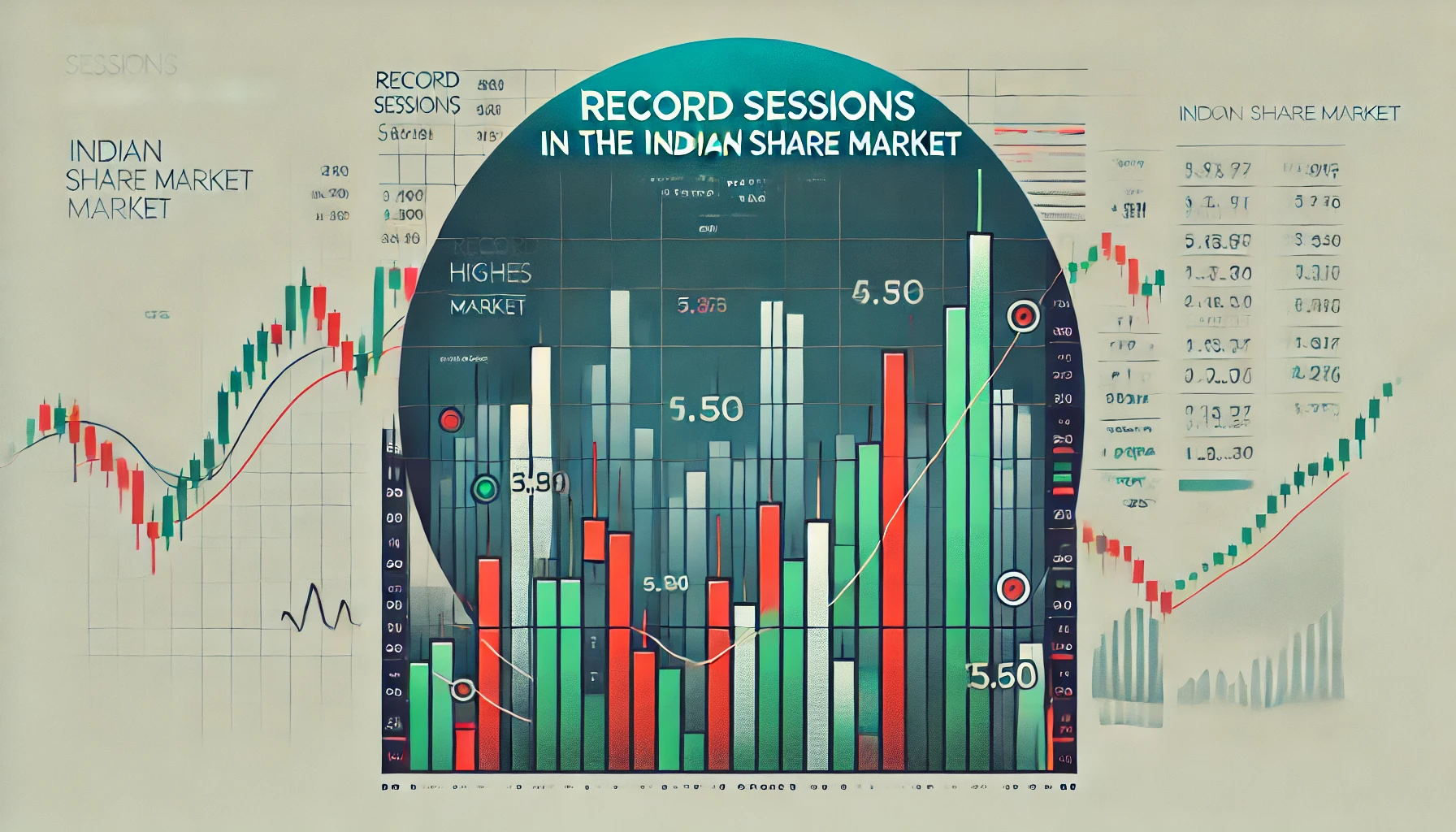In the Indian share market, technical analysis plays a critical role in helping traders and investors make informed decisions. Among the many tools used for analyzing market trends and forecasting potential price movements, Pivot Points stand out due to their simplicity and effectiveness. Pivot Points help traders identify potential support and resistance levels, providing key insights into where prices might reverse or accelerate.
This blog will explore the fundamentals of Pivot Points, their calculation, practical applications in the Indian share market, and historical data illustrating their performance. By the end, you’ll have a comprehensive understanding of how to use Pivot Points to enhance your trading strategy.
What Are Pivot Points?
Pivot Points are a widely used technical indicator that helps traders determine potential support and resistance levels. They are calculated using the high, low, and closing prices of the previous trading day. Pivot Points are used to predict price movements in intraday trading by providing key levels where the market might turn or continue trending.
The main Pivot Point (PP) acts as a central indicator, with support (S1, S2) and resistance levels (R1, R2) placed around it. These levels provide a clear structure for understanding price action.
How to Calculate Pivot Points
Pivot Points are calculated using a simple formula that considers the previous day’s high, low, and closing prices. The main Pivot Point (PP) is calculated as:PP=High+Low+Close3\text{PP} = \frac{\text{High} + \text{Low} + \text{Close}}{3}PP=3High+Low+Close
Once you have the main Pivot Point, the support and resistance levels can be calculated as:
- Resistance 1 (R1) = (2 × PP) – Low
- Support 1 (S1) = (2 × PP) – High
- Resistance 2 (R2) = PP + (High – Low)
- Support 2 (S2) = PP – (High – Low)
These levels help traders spot potential reversal points or continuations in price movement.
Historical Example of Pivot Points in Indian Stocks
Let’s take the example of Tata Consultancy Services (TCS) on a random trading day to illustrate how Pivot Points are applied in real-time trading.
| Date | High | Low | Close | Pivot Point (PP) | Resistance 1 (R1) | Support 1 (S1) |
|---|---|---|---|---|---|---|
| 1st April 2023 | ₹3,150 | ₹3,080 | ₹3,110 | ₹3,113.33 | ₹3,146.67 | ₹3,076.67 |
| 2nd April 2023 | ₹3,160 | ₹3,090 | ₹3,120 | ₹3,123.33 | ₹3,156.67 | ₹3,086.67 |
In this table, we can see how Pivot Points are used to define the expected price range for TCS, allowing traders to determine the best points to enter or exit trades. The Resistance and Support levels provide clear price targets for intraday trading.
Types of Pivot Points
There are several variations of Pivot Points, including the Standard Pivot Points, Fibonacci Pivot Points, Camarilla Pivot Points, and Woodie’s Pivot Points. Each type of Pivot Point has a slightly different calculation method, but the fundamental concept remains the same—providing key levels where the price is likely to react.
- Standard Pivot Points: This is the most commonly used type, where the formula mentioned above applies.
- Fibonacci Pivot Points: These use Fibonacci retracement levels in addition to the standard Pivot Point calculation.
- Camarilla Pivot Points: This variation focuses more on short-term price movements, especially in volatile markets.
- Woodie’s Pivot Points: These emphasize the previous day’s close more heavily, giving it additional weight in the calculation.
How to Use Pivot Points in the Indian Share Market
Pivot Points can be used in several ways depending on the market conditions and your trading style. Here are some of the most common strategies:
- Identifying Support and Resistance Levels: Pivot Points provide clear support and resistance levels, helping traders plan their entry and exit points.
- Breakout Strategy: When the price breaks above a resistance level, it signals a potential upward breakout. Similarly, breaking below a support level may indicate a downward breakout.
- Reversal Strategy: If the price approaches a Pivot Point, it may reverse, offering a good entry opportunity for a counter-trend trade.
Below is a table showcasing the performance of the Nifty 50 index on key trading days using Pivot Points.
| Date | High | Low | Close | Pivot Point (PP) | Resistance 1 (R1) | Support 1 (S1) | Outcome |
|---|---|---|---|---|---|---|---|
| 10th June 2023 | ₹19,300 | ₹19,150 | ₹19,200 | ₹19,216.67 | ₹19,266.67 | ₹19,166.67 | Price held above PP, indicating bullish trend |
| 15th June 2023 | ₹19,350 | ₹19,200 | ₹19,280 | ₹19,276.67 | ₹19,326.67 | ₹19,226.67 | Price broke R1, signaling a potential upward breakout |
Pivot Points vs. Other Indicators
Pivot Points are often compared with other technical indicators like Moving Averages, Bollinger Bands, and Relative Strength Index (RSI). While Moving Averages help identify the overall trend, Pivot Points focus on specific support and resistance levels that can provide more actionable trading signals.
A common strategy is to combine Pivot Points with RSI to filter out false signals. For instance, if the price hits a Pivot Point resistance level while the RSI is in the overbought zone, it may indicate a strong reversal signal.
Advantages of Using Pivot Points
- Simple to Calculate: Pivot Points are easy to calculate and don’t require complex formulas, making them accessible to all traders.
- Reliable Support and Resistance Levels: The levels generated by Pivot Points are often respected by the market, providing high-quality trade signals.
- Effective for Intraday Trading: Pivot Points are particularly useful for short-term traders who focus on intraday price movements.
Limitations of Pivot Points
While Pivot Points are useful, they have certain limitations, particularly in highly volatile or trending markets. In such conditions, prices may move quickly beyond the calculated resistance and support levels, making Pivot Points less effective.
Additionally, Pivot Points work best when used in conjunction with other technical indicators, such as RSI or Moving Averages, to confirm trading signals.
Historical Performance of Pivot Points in the Indian Share Market
To understand how Pivot Points have performed historically in the Indian share market, let’s examine their application during significant market events. For example, during the 2020 market crash triggered by the COVID-19 pandemic, Pivot Points provided key levels for traders to enter or exit positions as the market experienced extreme volatility.
| Date | High | Low | Close | Pivot Point (PP) | Outcome |
|---|---|---|---|---|---|
| 24th March 2020 | ₹9,500 | ₹7,800 | ₹8,300 | ₹8,533.33 | Price respected PP and found support |
| 31st March 2020 | ₹9,000 | ₹8,200 | ₹8,700 | ₹8,633.33 | Price broke R1, indicating market recovery |
Combining Pivot Points with Other Indicators
Pivot Points are most effective when combined with other technical indicators. Below is a table demonstrating how combining Pivot Points with Moving Averages improves the reliability of trading signals.
| Stock | Pivot Point (PP) | Moving Average (50-day) | Signal |
|---|---|---|---|
| Reliance Industries | ₹2,500 | ₹2,600 | Buy |
| HDFC Bank | ₹1,800 | ₹1,850 | Hold |
How to Implement Pivot Points in Your Trading Strategy
If you’re looking to use Pivot Points in your trading strategy, here are some actionable steps:
- Determine Key Levels: Start by calculating the Pivot Points for your chosen stock or index.
- Watch for Breakouts: Pay attention to whether the price breaks through key support or resistance levels.
- Confirm with Other Indicators: Use RSI, MACD, or Moving Averages to confirm the signals generated by Pivot Points.
- Manage Risk: Always set stop-loss levels near support or resistance points to limit potential losses.
- Backtest Your Strategy: Before implementing in live markets, backtest your strategy using historical data to ensure its effectiveness.
Conclusion
Pivot Points are an invaluable tool for traders in the Indian share market, offering clear support and resistance levels that help identify potential reversals or continuations. Whether you’re a short-term intraday trader or a swing trader, incorporating Pivot Points into your strategy can improve your ability to make informed decisions and capitalize on price movements.
By combining Pivot Points with other technical indicators and carefully managing risk, you can develop a robust trading strategy tailored to the dynamic conditions of the Indian share market.

What is the TRIN stock market indicator?
The TRIN (Trading Index), also referred to as the Arms Index, is a technical analysis …

Record Sessions
The Indian share market is a dynamic and volatile space where major highs and lows …

3 Line Strike
Candlestick patterns are a vital tool for traders in the stock market, offering insights into …

3 White Soldiers and 3 Black Crows
Candlestick patterns are a key element of technical analysis in stock trading, offering clear signals …

Gapping Doji
Candlestick patterns are a critical part of technical analysis in the stock market, providing traders …

3 Windows
Candlestick patterns are a vital part of technical analysis, offering traders and investors insights into …

2 Gapping Candles
In the fast-paced world of the Indian stock market, technical analysis plays a crucial role …

3 Inside Down and Up
Candlestick patterns are powerful tools in the world of technical analysis, offering traders insight into …

Bullish and Bearish Belt Hold
Technical analysis is an essential part of trading in the Indian share market. Candlestick patterns, …

Piercing and Dark Cloud Cover
In the ever-evolving Indian stock market, candlestick patterns are crucial for traders aiming to predict …

Double Doji
Candlestick patterns have long been a favored tool for technical traders to forecast market movements. …

Rising and Falling Windows
In the world of technical analysis, candlestick patterns are vital tools for traders to anticipate …

Tweezer Top and Bottom
In the fast-paced world of the Indian share market, traders use technical analysis tools to …

Morning Star and Evening Star
In the Indian share market, technical analysis is a valuable tool for traders aiming to …

Hammer and Hanging Man
The Indian stock market offers a wealth of opportunities for traders who understand technical analysis. …

Shooting Star and Inverted Hammer
The Indian stock market, with its dynamic nature, presents various opportunities for traders and investors. …

Last Engulfing
The Indian share market is filled with patterns that can help traders make informed decisions. …

Harami
In the world of stock market analysis, candlestick patterns offer valuable insights into price movements. …

Engulfing
The Indian share market is known for its volatility, and traders often rely on technical …

Marubozu
Candlestick patterns are powerful tools used by traders in the Indian share market to analyze …

Spinning Top
The Indian share market, like any other, experiences constant fluctuations due to a multitude of …

Doji
The Indian share market is dynamic, with investors using various tools to gauge stock performance. …

Double Top
In the world of technical analysis, chart patterns are valuable tools that help traders spot …

Tweezer
In the Indian share market, where volatility and price fluctuations are part of daily trading, …

Harami
In the world of technical analysis, candlestick patterns are powerful tools that help traders make …

Heiken-Ashi
Navigating the Indian share market can be challenging due to the inherent volatility and market …

Ichimoku
In the world of technical analysis, few indicators offer the comprehensive insights that the Ichimoku …

Value Charts
In the ever-changing landscape of the Indian share market, traders and investors need tools that …

Money Flow Index
In the Indian share market, identifying trends, understanding momentum, and assessing volume are critical components …

Aroon
In the fast-paced world of the Indian share market, identifying market trends and spotting reversals …

Gator Indicator
In the Indian share market, success is largely dependent on identifying the right trends and …



















